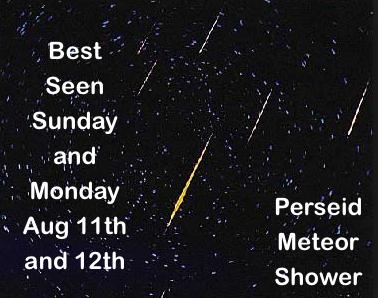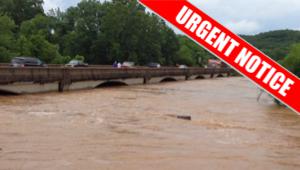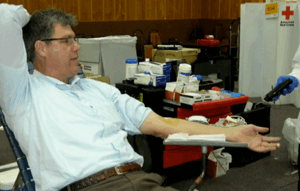
Submitted by
Dee Loflin SMT Manager/Writer
Missouri - The annual Perseid meteor shower created by leftover bits of a comet is at its best in the night sky now, but there are a few tips to keep in mind to make the most the cosmic fireworks show.
The 2013 Perseid meteor shower will peak in the late overnight hours of Sunday and Monday (Aug. 11 and 12), and could light up the night sky with up to 100 meteors an hour for stargazers with the best viewing conditions. To see the most meteors, you will need clear weather and a dark sky far from the interference of bright city lights. This may not happen if the clouds do not dissipate in Missouri.
"For optimal viewing, find an open sky because Perseid meteors come across the sky from all directions. Lie on the ground and look straight up into the dark sky," NASA scientists advised in a skywatching guide. "Again, it is important to be far away from artificial lights. Your eyes can take up to 30 minutes to adjust to the darkness, so allow plenty of time for your eyes to dark-adapt."
The Perseids appear to radiate out of the constellation Perseus, which is how they get their name. The constellation is currently in the northeastern night sky after sunset, but observers will likely see more meteors by looking straight up, and not directly at the constellation, NASA scientists have said.
If bad weather spoils your Perseids viewing, don't fret. You can also watch the meteor display online tonight in two free webcasts. You can watch the Perseid meteor shower webcasts live on SPACE.com, courtesy of NASA and the Slooh Space Camera.
Beginning at nightfall, NASA's all-sky camera at the Marshall Space Flight Center in Huntsville, Ala., will offer a live view of the night sky and any meteors that flare up overhead. The webcast caught 14 Perseid meteors during its first night on Saturday (Aug. 10), MSFC officials said.
At 7 p.m. EDT (2300 GMT) tonight, the Slooh Space Camera, an online stargazing website that uses remotely operated telescopes, will offer a free webcast from its observatory on Mt. Tiede in the Canary Islands, off the western coast of Africa. You can watch the feed on SPACE.com or directly from Slooh via the Slooh Space Camera website.
Skywatchers around the world have already begun enjoying the Perseid meteor shower. Photographer Jeff Dai joined a group of stargazers in China who ventured up Mount Jinfo in Chongqing to observe the celestial display.
"Our 10-man group enjoyed more than 300 meteors early this morning," Dai told SPACE.com in an email today. "The waves of cheering lasted all night."
The Perseid meteor shower occurs each year in min-August when the Earth passes through a dusty trail of leftovers from Comet Swift-Tuttle, a comet that orbits the sun once every 133 years. Most of this comet debris, which is made up of bits of ice and dust, is more than 1,000 years old, according to a NASA description.
As the Earth passes through the Swift-Tuttle debris stream, the ice and dust fragments slam into the atmosphere and burn up, creating one of the best meteor showers of the year for stargazers.
Humans have been observing the Perseid meteor shower for at least 2,000 years, NASA officials said. If you are planning an all-night meteor session, here are two more tips:
Get comfortable: Staring up at the night sky from the ground or a standing position can be tiring on your neck. Consider a reclining lawn chair to stay comfortable.
Stay warm: It can get chilly at night, even in the summer, so a light jacket or windbreaker might be just what you need to avoid dipping back inside and ruining your night vision.

Submitted by
Dee Loflin, SMT Manager/Writer
Rolla, Missouri - Flooding has closed Interstate 44 at mile marker 172 near the city of Jerome. Traffic backups are now occurring near Rolla, Mo., as traffic detours to two-lane highways.
MoDOT urges motor carriers and other travelers to exit the interstate at the earliest, convenient alternate route. This is especially important for commercial motor vehicle traffic.
Major routes that can serve as alternates include Interstate 70, US 50 and US 60.
Please do not plan to travel to central Missouri and detour from there. The earlier travelers can find an alternate, the better.
U.S. 63 is also closed in both directions, south of Vienna in Maries County.
MoDOT expects I-44 and US 63 to remain closed for more than six hours. When the water recedes, MoDOT will inspect pavement and bridges for safety before opening highways for public use.
Visit http://www.modot.org/ to find the MoDOT Traveler Information Map and information on obtaining the free smartphone app or call 1-888-ASK MoDOT (888-275-6636) for up-to-date information.

Submitted by
Dee Loflin, SMT Manager/Writer
Kentucky Transportation Cabinet- If you plan to travel to Paducah, Kentucky be aware of the traffic delays.
Traffic will be restricted to one lane at the intersection of US 51, US 60, and US 62 in Wickliffe/Ballard County starting Monday, Aug. 5.
During the time traffic restrictions on the US 51 Ohio River Bridge have lowered the traffic count at this busy intersection, a contractor for the Kentucky Transportation Cabinet plans to place new concrete pavement in the intersection and along the approaches.
This work, starting Monday, Aug. 5 will require traffic to be restricted to one lane with flow through the intersection controlled by a temporary automated signal.
This is the "T" intersection where eastbound traffic from Illinois and Missouri for US 60 turns left toward LaCenter and Paducah and where southbound traffic for US 51 and eastbound traffic for US 62 turns right toward Bardwell.
The temporary traffic signal will be configured to allow one lane of traffic to move at a time to facilitate this intersection improvement work.
Due to the high truck volume at this intersection, the pavement has deteriorated and waffled. The asphalt pavement will be removed and replaced with a new concrete surface that will be more durable and safer.
Charbon Contracting is the prime contractor on this highway improvement project.
As a reminder, the US 51/US 60/US 60 Ohio River Bridge between Wickliffe, KY, and Cairo, IL, is restricted to a 7 ft. maximum vehicle width, a 19 ft. maximum vehicle length, and no trailers through about Sept. 14. This essentially restricts the bridge to passenger vehicles and standard pickup trucks for the duration of that project. All vehicles such as commercial trucks, motor homes, buses, and other vehicles that are over the 7 ft. width and 19 ft. length are excluded from the bridge work zone.

Written by
Dee Loflin SMT Manager/Writer
Dexter, Missouri – While many have generously given blood donations, the American Red Cross is in critical need of blood at this time. Donors of all blood types, especially O negative, A negative and B negative are still needed this summer. Blood products are being distributed to hospitals faster than donations are being collected.
Accident and burn victims, heart surgery patients, and organ transplant recipients are just a view that requires blood and platelets. Many who are being treated for cancer or sickle cell disease may also depend on these lifesaving transfusions. In fact, every two seconds a patient in the U.S. needs a blood transfusion.
The Red Cross appreciates all those who take the time to help save lives. Visit redcrossblood.org or call 1-800-RED CROSS to learn more and schedule an appointment as soon as possible.
On Wednesday, August 7th from 3 p.m. – 7 p.m. the Red Cross will be at the American Legion building across from West City Part. They need your help! Please donate blood TODAY!
If you absolutely cannot give blood today, here is a list of upcoming blood drives in Dexter and Puxico.
Aug. 16 from 1:30-6:30 p.m. at Fraternal Order of Eagles, 13583 Old Highway 25 in Dexter, Mo.
Aug. 17 from 10:30 a.m. to 3:30 p.m. at Fraternal Order of Eagles, 13583 Old Highway 25 in Dexter, Mo.
Aug. 19 from 12-5 p.m. at Sacred Heart Catholic Church, 102 E. Castor in Dexter, Mo.
Aug. 23 from 2-6 p.m. at Dexter Church of Christ, 1014 N. One Mile Road in Dexter, Mo.
Aug. 30 from 2-6 p.m. at Life Chapel Assembly of God, 22443 State Highway 51 in Puxico, Mo.

Written by
Beth Farrah, SMT Writer
YouTube has been involved with its viewers since it first began back in 2005. Back in May, YouTube dedicated a whole week to comedians, naming it Comedy Week. That week, the website highlighted hilarious videos, comedians, and YouTube users so that everyone could get a good laugh.
Now, YouTube is promoting Geek Week. And, of course, this special week is being dedicated to science-related videos while throwing in a little video gaming fun and some Star Wars videos into the mix. The website will be launching some type of geeky riddles every morning of this week. You can try to solve the puzzles yourself by logging on to your very own YouTube account.
The riddles, known as “Easter Eggs” are hidden throughout the websites with geeky videos that may be along the lines of these topics: comic books, video games, and IQ Tests. Yesterday, the Easter Egg clue was found, but it was written in a different language. After decoding the Huttese language, the new clue to be searched by all users was: “Use the force, Luke.” All people who searched this phrase in the YouTube search bar found all of their YouTube channels, videos, and items hovering on their internet page.
With more Easter Eggs to be found throughout the week, users are flocking to the website to help decode the daily riddle. Aside from the games and opportunities YouTube is offering for the next few days, many teachers and educators are finding Geek Week very helpful while they are making their yearly plans for their classes.
YouTube is used in many classrooms across the United States because of its variety of videos. Geek Week has been highlighting a bunch of science-related videos, experiments, and helpful study aids for science classrooms for kids and students of all ages.
To help get some science-y classroom tips and ideas, you can get on YouTube and check out their playlists. They have a variety of scientists with their very own YouTube channels and accounts that post easy to do and fun experiments. There are also many lessons and videos to help in all different science classes, including Physical Science, Biology, and Chemistry.
Here’s the schedule for the rest of Geek Week so you can log on and check out their videos:
Blockbuster Sunday, Global Geekery Monday, Brainiac Tuesday, Super Wednesday, Gaming Thursday, Fan Friday, and Best of Saturday.
Be sure to log on and check it out for yourself!

